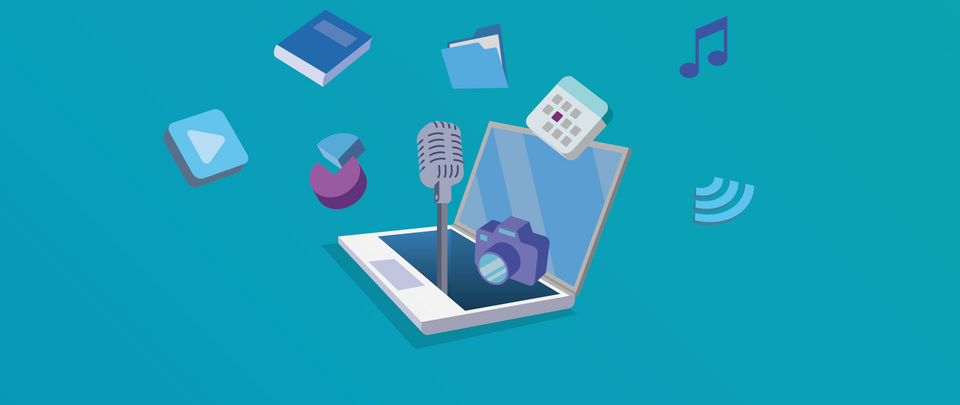
Getting started with
Open Educational Resources
Open Educational Resources (OER) are learning materials that anyone can use freely. To achieve this, the materials are released under a special license and made publicly available, usually over the internet.
OER materials provide students with more learning opportunities suited to various learning styles. They also provide teachers with resources they may integrate, modified or not, into their own teaching.
Moreover, due to their generous conditions of use, Open Educational Resources are also useful for anyone preparing a publication, be it an article, a book, or video: unlike copyrighted content, OER materials can be used, adapted, and re-distributed as one sees fit, with no need to ask the original author.

What are Open Educational Resources?
The big picture
Presentations of Open Educational Resources (oer) can be quite technical. This is because they have to consider upon many different dimensions – including legal, technological and didactical ones. However, the idea behind oer is easy to understand if we know the two main motivations of their proponents:
- The access to learning materials by learners should be made easier and cheaper, as the spread of knowledge is in the interest of a democratic society.
- The sharing of learning materials among teachers should be made easier, due to its many advantages in terms of inspiration, emulation, and effectiveness.
UNESCO definition
In the present era, these two goals can be achieved by facilitating the publication of learning materials on the internet under so-called “open licenses” (detailed below). Correspondingly, UNESCO has provided in 2012 the following definition of Open Educational Resources:
OER are teaching, learning and research materials in any medium – digital or otherwise – that reside in the public domain or have been released under an open license that permits no-cost access, use, adaptation and redistribution by others with no or limited restrictions.
In what follows, we spell out step by step the various elements of this complex formulation.
No-cost access, use, adaptation and redistribution
The creators of oer materials grant the right to users
- to keep a copy of the material,
- to use the material freely, in private or in public,
- to modify the material, including by combining it with their own content or with other open content,
- to re-publish the material, modified or not,
- without having to ask the original creator and
- with no financial compensation for the original creator.
Various understandings of “openness”
To correspond to the UNESCO definition of “openness”, Open Educational Resources must fulfill all six conditions above.
Note, however, that the term “open” is also commonly used in the broader sense of “freely redistributable”: for instance, Open Access materials do not fulfill condition 4, as they can only be redistributed without modification.
Sometimes the term “open” is even applied to any form of publicly accessible materials, such as YouTube videos. However, this is arguably an overextension of the term, as such in most cases users are not allowed to keep a private copy of the materials (condition 1), nor to use them in any way beyond private viewing, listening or reading.
Copyright
An original work created by a person, from the moment of its creation (i.e. before any publication) is automatically under copyright, as long as it three conditions fulfills:
- It must the intellectual creation of a person (natural phenomena and the production of machines or animals cannot be copyrighted).
- It must have an individual character, in other words it must display a “certain degree of individuality or originality” and “stand out from what is considered usual and common” (cf. CCDigitaLaw).
- It must be expressed in some tangible form (concept and ideas that stay in one’s head cannot be copyrighted).
Concerning copyright, Switzerland and other European countries make a distinction between “moral right” and “property right”.
Moral right: this is the right to be recognized and cited as the creator of a work, especially to have one’s name mentioned in association with it. This right can never be transferred and has no limitation in time.
Property right: this is the right to publicly exploit a given work, for instance commercially. It is limited in time, typically 70 years after the author’s death (see below for details). Any exploitation requires the creator’s consent (which is why copyrighted materials often come with the label “all rights reserved”): however, this right is transferable, so that creators can choose to let others exploit the work for them, typically against payment.
For instance, an author can transfer the right to exploit his or her novel to a publishing house, which is then responsible for printing, distributing, marketing and of course selling the work. In exchange, the author negotiates for instance an advance payment, or royalties on sales.
Note the following exceptions to copyright:
- The right of quotation ensures that excerpts of copyrighted materials may be included in one’s own work for the sake of illustration; the source must always be clearly indicated.
- Copyrighted materials may be used in educational contexts, as long as certain condition are met (see this webpage for full details).
- Users can freely use copyrighted materials in the private sphere (for instance among family members or in small groups of friends).
Public domain
In a large number of countries, including Switzerland, the “property right” aspect of copyright expires 70 years after the creator’s death (some countries have shorter or longer time spans). From then on, the work becomes part of the public domain.
Public domain materials can be used freely by anyone. While not strictly necessary in all cases, it is good practice to always credit the original creator to avoid any accusation of plagiarism.
Public domain works are Open Educational Resources in UNESCO’s sense, as they fulfill all six conditions listed above.
Open licenses
We saw above that copyright entails the right to freely decide how a work should be used, displayed or distributed, if at all. To this end, creators can decide to grant others a right to exploit the work commercially.
The idea behind open licences is that creators can also use copyright to grant anyone an automatic license to use the work in a certain way. For instance, creators can license their work in such as way as to grant users the various freedoms listed above in the section on open materials.
For cultural works such as music, pictures or text, the most popular open licenses are the ones defined by the Creative Commons Foundation. The various Creative Commons licenses are discussed next.
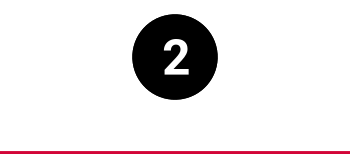
Creative Commons licenses
The Creative Commons Foundation
The Creative Commons Foundation is a US-American organization created in 2001 by Prof. Lawrence Lessig, a Harvard Law School professor and activist for internet freedom. The goal of the Foundation is to promote a world-wide culture of re-use, remix and exchange.
As we saw, open licenses must grant, at a minimum, an automatic right to users to keep a copy of the materials and to re-distribute it freely to others. This, however, is only a minimal definition of openness: the UNESCO definition of Open Educational Resources is more demanding.
The Creative Commons Foundation has defined several licenses to help creators release their materials with the degree of openness that suits them best. These licenses, called Creative Commons Licenses (or CC Licences for short), are the most widely used licenses worldwide for intellectual and cultural works. For other kinds of copyrightable materials, other licenses are in use that cannot be detailed in this document: for an introduction to license for data, see this webpage; for software, the Open Source Initiative maintains a fairly comprehensive license list.
How to license one’s materials
There is no absolute rule to decide how closed or open a resource should be. To a large extent, this is a question of personal preference. We offer some general considerations and recommendations on this topic below.
In practice, in order to release any kind of content as an open resource, it is sufficient to clearly indicate the name of the license somewhere on or in the work itself (e. g. on the first page of a book or in the credits of a video).
The users must also have access to the detailed conditions of the license, but this does not have to be included in the work: it is admissible to merely put a reference or link to the complete statement of conditions.
Note that open licenses grant users a permanent right that cannot be revoked by the creator. However, creators may release new versions under a different license.
The six CC Licenses
The Creative Commons Foundation offers a choice of six different licenses. We present them here in turn, starting with the more restrictive CC licenses, the so-called “Non- Derivative CC Licenses”.

The CC Attribution Non-Derivative License allows users to redistribute the materials, commercially or not, but only “verbatim”, i. e. without any modification.
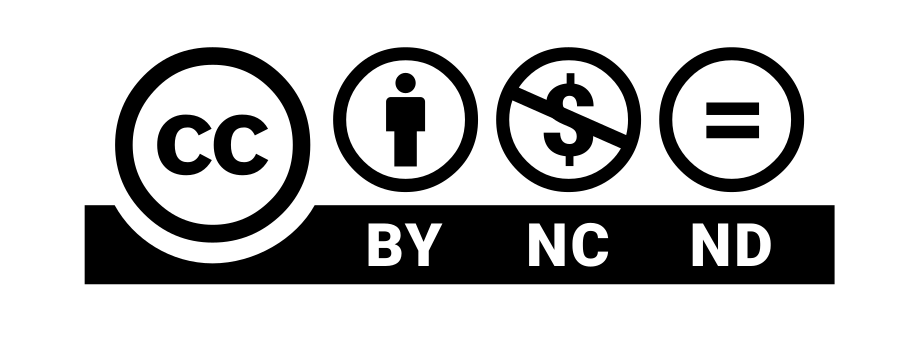
The CC Attribution Non-Derivative Non-Commercial License allows users to redistribute the materials, but only non-commercially and “verbatim”, i. e. without any modification.
Comment
As the name indicates, the Non-Derivatives CC Licenses do not grant users the right to redistribute modified materials. Correspondingly, they cannot be used for Open Educational Resources in UNESCO’s sense. However, they can be used, among other things, for open access publications.
Many people (the Free Software Foundation, for instance) argue that CC Non-Derivative Licenses are suited for opinion pieces or materials with a high personal content. In order to defend an opinion and spread it widely, it makes sense to allow free redistribution. To avoid any confusion as to who says what, however, protecting the content by allowing only verbatim copies is a good option. It is true that all CC licenses require modifications to be indicated clearly; redistributed materials should not give the impression that the original author endorses the modified work. Still: simply forbidding derivatives is an even safer way of preventing wrong attributions.
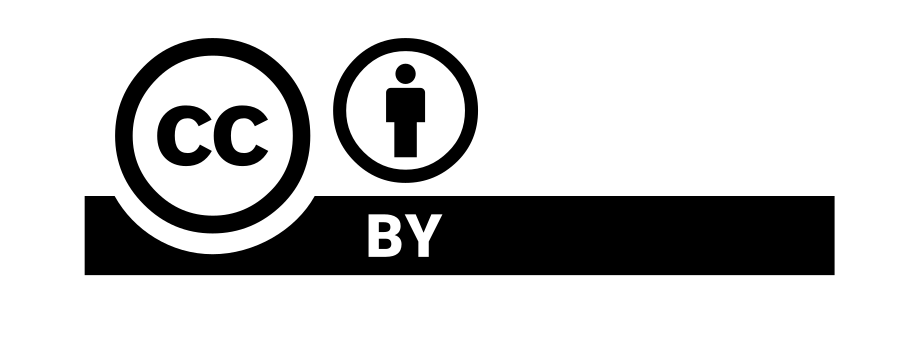
The CC Attribution License allows users to modify the material and redistribute the modified version, commercially or not.
Comment
This is the most open (in UNESCO’s sense) of the CC licenses. Note that with this license people may sell the original work for a profit with no royalties owed to the original creator: for instance, a publication on the internet under a CC BY license may be prepared as PDF booklets or an e-book and sold on online bookstores (to prevent this, CC BY-NC should be chosen: see below). Moreover, people who modify the original work to a sufficient degree have the right to copyright the modified version (to prevent this, CC BY-SA should be chosen: see below). When opting for this license, it is important to make sure one is comfortable with both these possibilities.
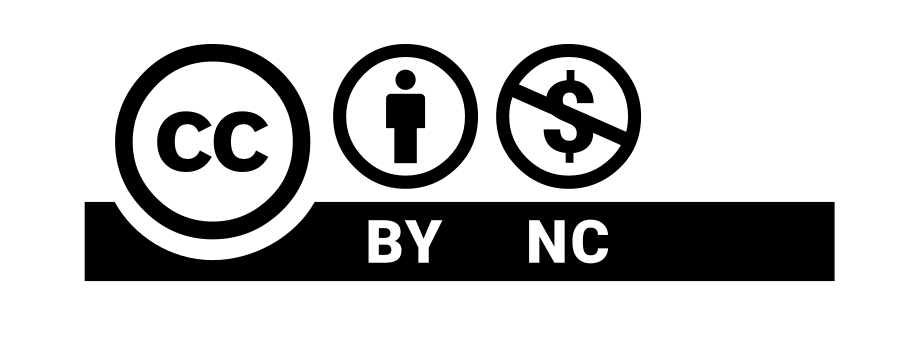
The CC Attribution Non-Commercial License allows users modify the material and redistribute the modified version, but only non-commercially.
Comment
See the observations above.

The CC Attribution Share-Alike License allows users to modify the material, redistribute the modified version, commercially or not, but only if the modified materials are released under the same license.
Comment
The advantage of share-alike licenses is that the original creator can benefit from any later modification made to their original work. For instance, when translators release a translation under such a license, they ensure that they can later integrate any improvement or correction. Many free software licenses, such as the GNU Public License, implement the share-alike principle. The idea behind this is that society may benefit from many programmers sharing their improvements to a given codebase – this could not happen if they weren’t obliged to disclose the changes they made to the original work.

The CC Attribution Share-Alike Non-Commercial License allows users to modify the material and redistribute the modified version, but only if the modified materials are redistributed non-commercially and released under the same license.

CC Zero is not a license, but a declaration that the creator waives any right to his or her creation, to the extent permitted by law.
Comment
In some jurisdictions, Switzerland included, creators cannot renounce copyright. To use CC 0 in spite of this, it is best to publish anonymously. Many programmers put snippets of code under CC 0. Many museums do the same with reproductions of the works in their collection (provided that said works are themselves in the public domain).
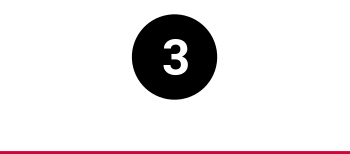
How to participate in OER
The principle of “openness” is a core component of the teaching strategy of the University of Basel. Nevertheless, publishing learning materials as OER is not a requirement of the university to its teaching staff: this is left to the individual teacher’s appreciation.
For teachers interested in participating in OER, the team Educational Technologies of the University can be approached for advice and support at bbit@clutterunibas.ch. The team also regularly provides training in this area (the courses are listed on this webpage).
To participate in OER, many options are available, not all of which are equally intensive or demanding. In what follows, we distinguish between four stages of participation to Open Educational Resources.
In Stage 1, OER participants include open resources in their own work – for example, they use open images in their presentations or integrate open videos made by colleagues in their courses.
Pros and cons
Users of OER minimize the risk of copyright infringement when publishing materials. On the other hand, it may be difficult to find open resources that exactly fit one’s needs.
How to proceed
- When you are about to create content, search the dedicated websites or use search filters to find open materials (see next section for detail), be it for inspiration or as elements to integrate in your work.
- In all cases, make sure to reference or cite properly and to respect the terms of the license (e. g. share-alike or non-commercial conditions).
In Stage 2, OER participants not only use open materials but also take the time, when distributing any content, to think about copyright and open licenses; when appropriate, they use oer-compatible licenses.
Pros and cons
It is a service to others to always state clearly how they can use any content you may share with them. On the other hand, this can be time consuming and choosing the best license is not always an easy task.
How to proceed
- When you have created content, consider making it easier for others to re-use you work by choosing an open license. This is especially fair if you have used open content in your own work.
- See above to decide on the degree of openness you are comfortable with and chose the corresponding license.
- Put the label for the chosen license on your materials with a link to the conditions.
- Use your work as you would normally (e. g. distribution via your university’s learning platform).
In Stage 3, OER participants not only license their own materials as OER but also make them available to others and spread them actively by uploading them on dedicated sharing platforms.
Pros and cons
By making their materials more widely available, active participants support the spread of knowledge. Moreover, by not merely using content but also making their own materials available, they give back to others and reinforce the sharing cycle. At the same time, for anyone aiming for a certain level of quality, this is demanding in terms of time and resources.
How to proceed
- When you have created content (especially of a certain quality), consider making it easier for others to re-use your work not only by choosing an open license, but also by making the materials available on OER sharing platforms (on this, see next section).
- Decide on the degree of openness you are comfortable with and chose the corresponding license.
- Put the label for the chosen license on your work with a link to the conditions.
- Decide on a sharing platform and upload your document there.
- Parallel distribution is obviously allowed, so you can still use your work as you would normally (for instance in-class or on your learning platform).
In Stage 4, OER participants do all of the above and, in addition, promote OER by making colleagues aware of OER principles, by offering advice and support, and by taking part in the international
exchange on this subject.
Pros and cons
Promoting OER is a form of social engagement, but, as any engagement, it is obviously time and energy consuming.
How to proceed
- If you have found this document useful, recommend it to others! As it is freely re-distributable, you can just send it to them.
- If you encounter interesting copyrighted content that you would like to re-use, for instance at a conference or online, ask their creators if they have thought of releasing openly.
- Become part of the OER community by taking part in working groups, going to open events, or joining an organization.
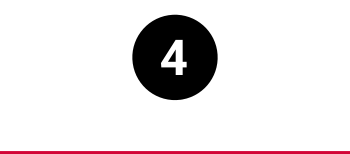
Where to find and publish OER
Where to find open multimedia content
Creative Commons Search. A search engine to explore text, audio, and video materials released under any of the Creative Commons licenses. URL: https://ccsearch.creativecommons.org/
Getty Open. Getty is a US-American cultural and philanthropic institution that works towards the presentation and preservation of arts across the globe. Parts of its online collections can be used freely (CC 0). URL: https://www.getty.edu/art/collection/search?open_content=true
MET Open Access. The Metropolitan Museum of Art in New York gives online access to its collection and provides many reproductions of its artwork under an open license. URL: https://www.metmuseum.org/art/collection/search?showOnly=openAccessg%7CopenAccess
Pexels. A large online database of photographs similar to Pixabay. A large number of its images can be used freely (CC 0). Others are under a special license that prohibit commercial use. URL: https://www.pexels.com
Pixabay. Pixabay is an online repository of free images similar to Pexels. A large number of images can be used freely (CC 0), while others are under a special license that prohibit commercial use. URL: https://pixabay.com
Unsplash. A large online database of quality photographs on a variety of topics that can be freely used. URL: https://unsplash.com
Wikimedia. Supported by a non-profit foundation, Wikimedia presents itself as a “global movement whose mission is to bring free educational content to the world”. Next to its highly successful crowd-sourced encyclopedia, Wikimedia offers open dictionaries, textbooks, and multimedia materials. URL: https://www.wikimedia.org
Note: the results of many search engines, including Google Images and YouTube, can be filtered by type of license.
Where to find open text books and other didactic materials
Massachusetts Institute of Technology Open CourseWare. A very large repository of teaching materials launched in 2001 by the MIT, with access to full courses, syllabi, reading lists, assessment materials, etc. URL: https://ocw.mit.edu
OERInfo. This quality German-language online portal supported by the German Ministry for Education and Research provides links to numerous online repositories for Open Educational Resources. URL: https://open-educational-resources.de/materialien/oer-verzeichnisse-und-services
OpenStax. The Open Stax platform offers many introductory manuals and textbooks in a variety of fields. URL: https://openstax.org
Open Textbook Library. A collection of links to high quality open textbooks, hosted by the University of Minnesota, Minneapolis. URL: https://open.umn.edu/opentextbooks
Open Yale Courses. This website provides free access to a range of open courses delivered at Yale University. Not only videos, but podcasts and transcripts are also available, allowing for different forms of learning. URL:
Where to upload open resources
Figshare. Figshare is a platform to share open content, especially databases and Open Educational Resources, used by many universities worldwide. URL: https://figshare.com
Moodle.net. moodle.net is the new extension of the international learning platform Moodle, specifically designed as a repository for OER content. URL: https://moodle.net
Zenodo. Zenodo, launched by the European Union’s OpenAIRE project and CERN, is a platform that relies on open-source technologies to publish open content, especially scientific in nature, such as databases, scientific articles, and learning materials. URL: https://zenodo.org
